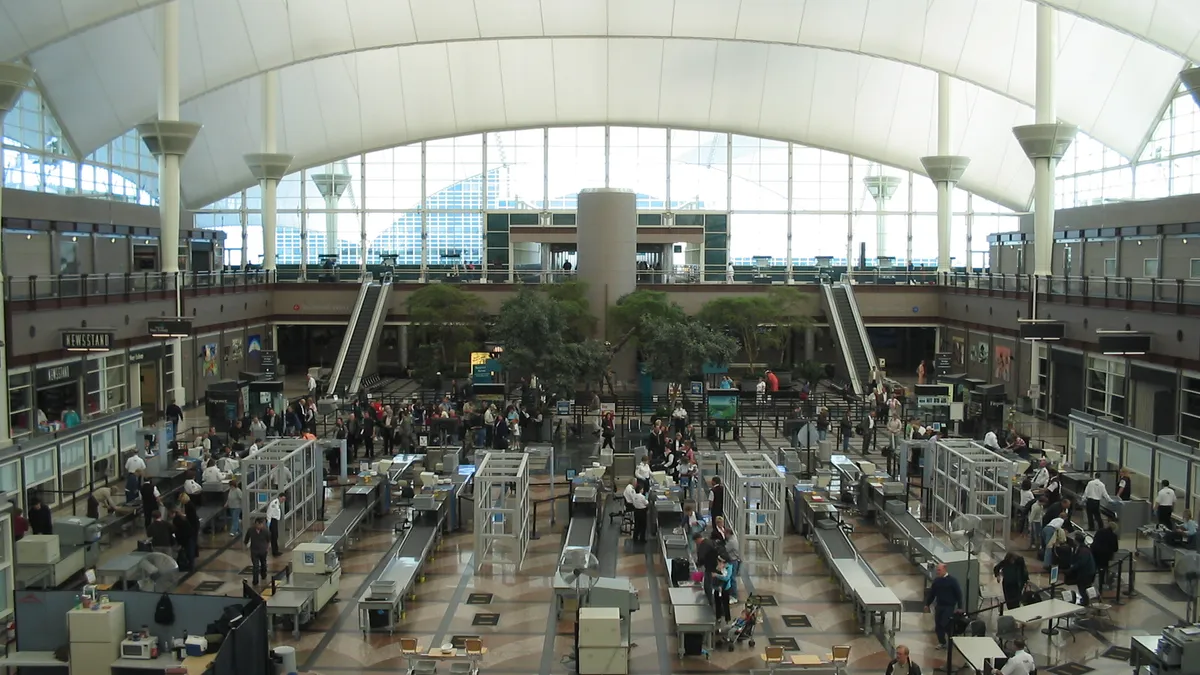Dive Brief:
- More than 50 U.S. airports could collectively account for up to $70 billion in construction projects during the next three years, according to Architectural Record, in an effort to modernize aging and outdated facilities.
- T.J. Schulz, president of the Airport Consultants Council, reportedly told the Record that the average age of airports in the U.S. is around 40 years old. However, advances in technology can necessitate major renovations or new construction well before then. Schultz said major airports have made all the short-term fixes they can in order to accommodate new technology, service trends and more passengers and now have no choice but to embark on major redesigns.
- The focus of these new capital programs are terminals and their amenities – retail, dining and even yoga rooms and children's' play areas – as well as a reduction in parking and rental car space in favor of alternate ground transportation facilities.
Dive Insight:
Given the cost to construct some recent airport terminals, transportation and runway projects, $70 billion is not unrealistic, particularly since that figure is spread out among 50 airports.
Chicago officials are finalizing plans for an $8.5 billion expansion at O'Hare International Airport, where crews will renovate three existing terminals and replace another, increase plane parking space by 25%, make room for larger planes, replace 40 existing gates and add an extra 35.
Los Angeles World Airports is chipping away at a $14 billion capital program at Los Angeles International Airport (LAX). In progress since 2009, projects there include terminal renovations, a new midfield satellite concourse, an automated people mover and a consolidated rental car center. Already complete is the new Tom Bradley International Terminal, utility plant and upgrades to airport infrastructure such as special lanes for taxis.
In the development stage is a $10 billion overhaul of John F. Kennedy International Airport in New York City. Planners are currently working on a strategy for connecting terminals, airport roads and parking, in addition to creating commercial spaces for upscale dining and retail.
Airports were dealt a financial blow earlier this year when Congress voted to keep the $4.50 cap on the Passenger Facility Charge during final negotiations of the $1.2 trillion spending bill. PFC revenue helps to finance large expansion projects that Federal Aviation Administration grants don't cover, and many in the industry have come out against a limit when setting a PFC.












